Horace Bristol (1908 - 1997) was among th first staff photographers for LIFE Magazine. A California native. He was a member of San Francisco's fames Group f/64, which included Ansel Adams, Imogen Cunningham, Edward Weston, Willard Van Dyke and Dorthea Lange. In the late thirties, Bristol became aware of the migration of Okies from the dust bowl to California's Central Valley, but the Great Depression was too depressing for his editiors at LIFE. Undaunted, Bristol employed John Steinbeck, a young, unkonwn journalist to accompany him to the campus to write a text for a photo book. Steinbeck was initially unenthusiastic but after energetic prodding by Bristol finally agreed. When Steinbeck arrived he apologized to Horace. "There's too much here", he told Bristol, "I have to write a novel". John Ford did use Bristol's images as the basis for his own 1940 masterpiece and both Bristol's original images and stills from the film finally appeared as a photo spread in LIFE. These images are a major part of the exhibition at Frank Pictures as are his images taken as one of five photographers in an elite Navy unit formed by Deward Steichen during WWII. After the war, Bristol became the pre-eminent photographer of post war Asia. In 1956, he returned from an assignent in Korea to find his wife had tragically committed suicide. Bristol felt responsible and in his grief burned a lifetime of prints and negatives, vowing to give up photography forever. He ultimately remarried and began a new family. In 1985, Henri Bristol read The Grapes of Wrath and innocently asked his father if he knew this wonderfull book? Horace realized he was denying his children their incredible legacy. He then pieced back together what images he could find and from 1987 untill his death in 1997. Bristol reprinted his found negatived and restored to the world his historic collection.
Horace Bristol died in August 1997, but not before seeing his photographs exhibited in galleries and museums throughout the United States and Europe, and a book of his work published in his name: Horace Bristol, An American View (Chronicle Books, 1996). His work has recently been on view at the Santa Barbara Museum of Art as part of Taking Root: A Century of Migrant Workers in California and was featured in the exhibition Ten: Gifts of SBMA PhotoFutures. In addition his work was featured in the Los Angeles County Museum of Art's exhibtion, Made in California and was showcased along side Dorthea Lange in an exhibition of his photographs at the J. Paul Getty Museum chronicling the plight of migrant laborers in an exhibition entitled The Grapes of Wrath: Horace Bristol's California Photographs.
California & The West
Signed Silver Gelatin Prints
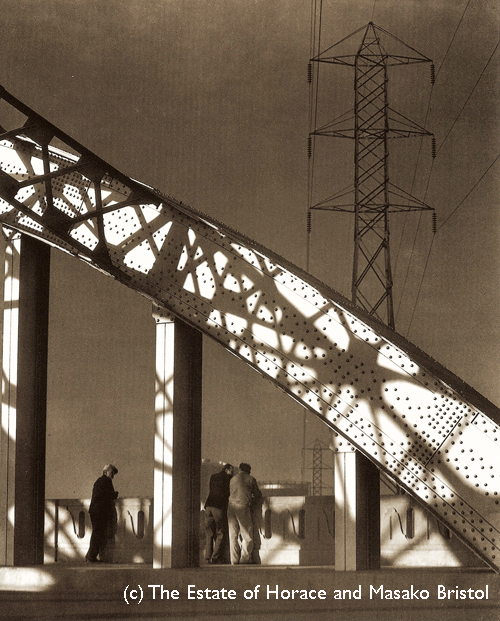
6th Street Bridge, 1938, 14" x 11"

6th Street Bridge, 1938, 11" x 14"
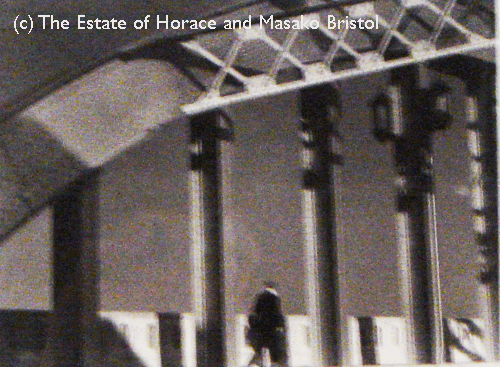
6th Street Bridge, 1938, 11" x 14"
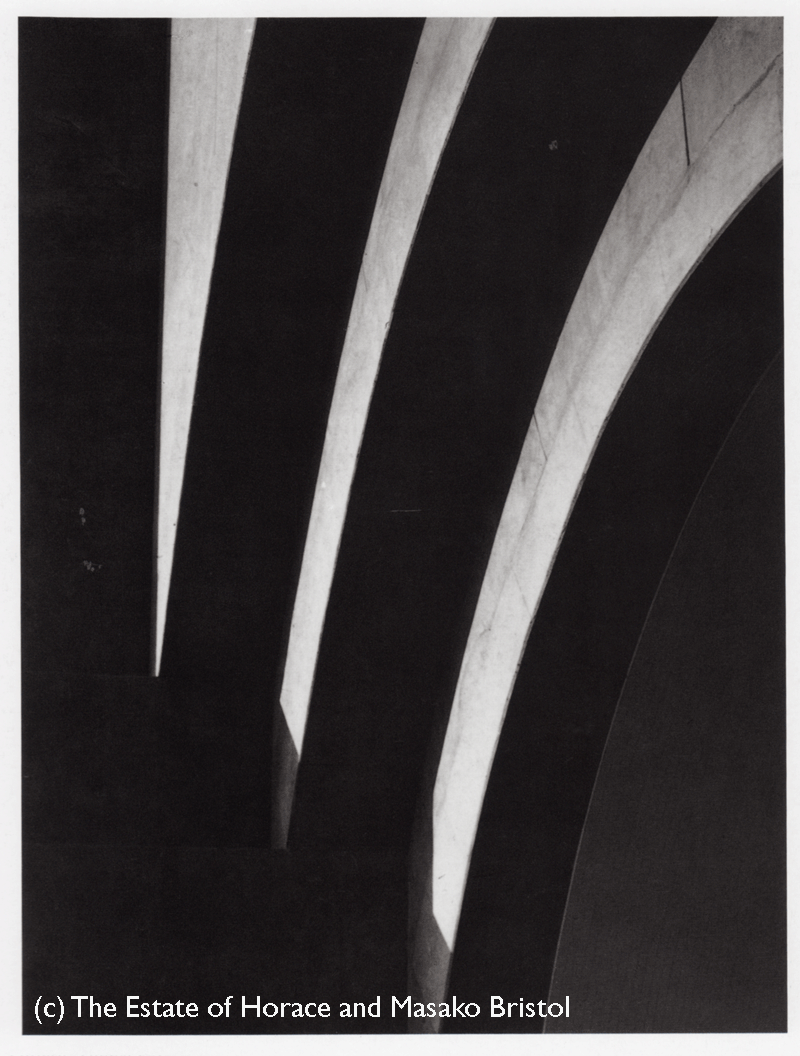
Detail of Tunnel, 11" x 14", 1933
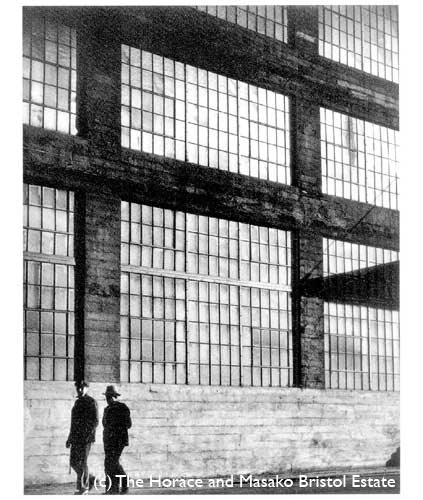
Two Men walking in front of factory facade, 14" x 11", 1936
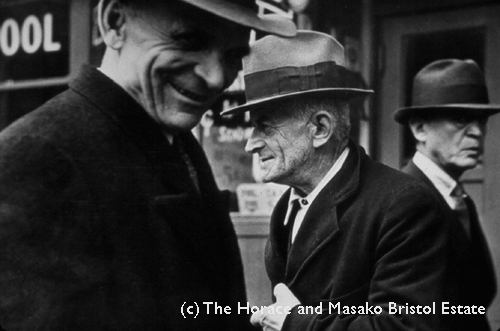
Three Men in front of Tavern, 1936, 11" x 14"
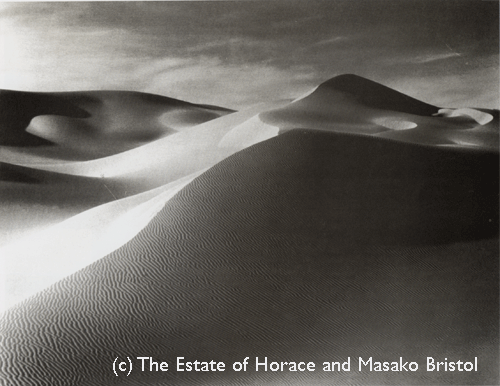
Sand Dunes, New Mexico, 1939, 14" x 11" 1942
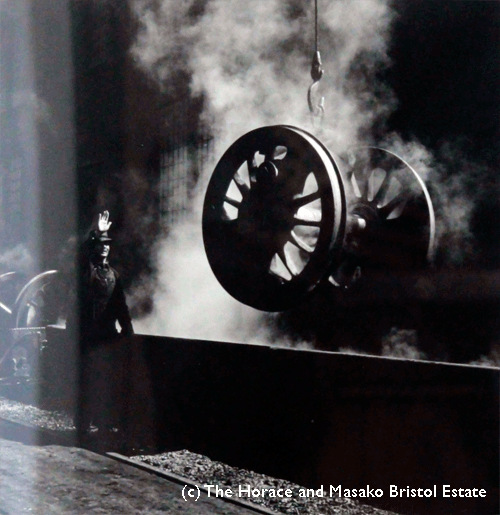
Railroad wheel, 1937, 11" x 14"

Oil Drilling Tools, 1936, 11" x 14"
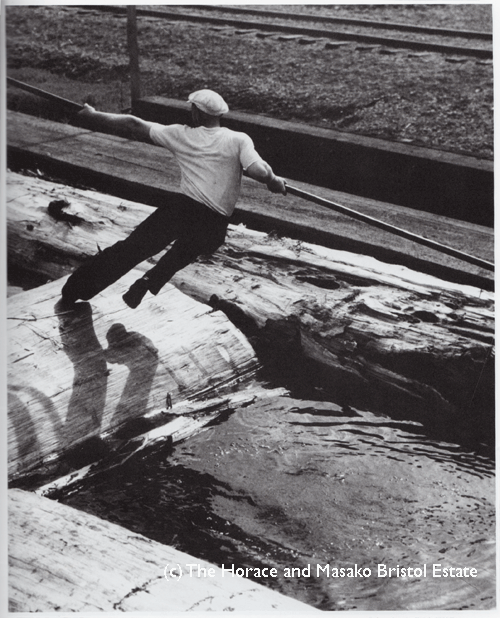
Pulling Log in Pond, 1935, 14" x 11"
In Life magazine photographer Horace Bristol's 1933 photo, the 6th Street Bridge's graceful, steel, streamline Moderne arches gleam in the sunlight, the perfect symbol of a young metropolis just coming into its own. When it opened in 1932 the nearly mile-long link was the longest concrete bridge in the world. It was also the last great downtown Los Angeles River bridge — formally known as a viaduct because it spans not just a river but railroad tracks and roads — and the crowning achievement of the city's engineer for bridges and structures, Merrill Butler, who, over four decades of service, oversaw the construction of at least nine Los Angeles River bridges. It was truly a bridge that a river could love. Now it is threatened by deterioration of its concrete supports and will be torn down. Three silver gelatin prints of the 6th Street Bridge, exhibited at Frank Pictures Gallery, represent the very last four signed images from Horace Bristol's 6th Street Bridge series from 1933. Once these particular prints are sold, signed photographs from the series will only be available on the secondary market. These photographs were taken in 1933 and printed by Bristol between 1985 and his death in 1997. The 24" x 30" posthumous digital print was made by Horace Bristol's estate (signed and stamped by Henri Bristol for the estate) in an edition of 15 in this size excusively.
Estate Prints
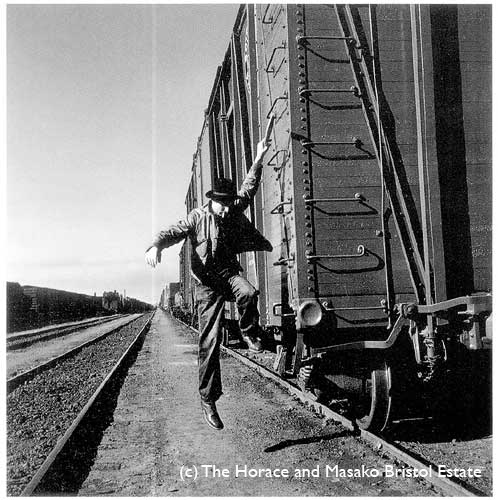
Brakeman Jumping from Boxcar, 28" x 28.5"

6th Street Bridge, 1938, 34" x 27.5"
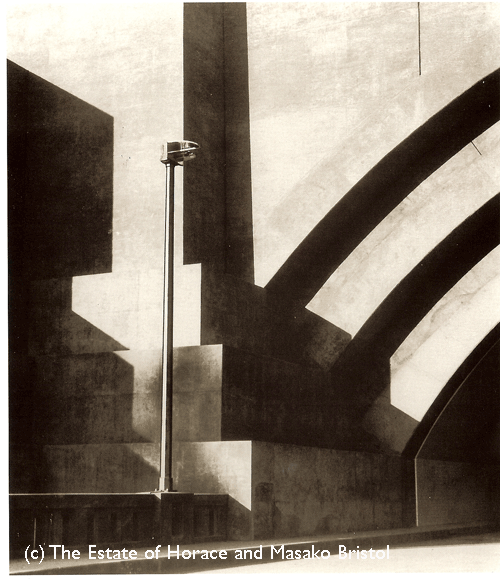
Tunnel Entrance with lamp, Los Angeles, 28" x 33", 1933
In Life magazine photographer Horace Bristol's 1933 photo, the 6th Street Bridge's graceful, steel, streamline Moderne arches gleam in the sunlight, the perfect symbol of a young metropolis just coming into its own. When it opened in 1932 the nearly mile-long link was the longest concrete bridge in the world. It was also the last great downtown Los Angeles River bridge — formally known as a viaduct because it spans not just a river but railroad tracks and roads — and the crowning achievement of the city's engineer for bridges and structures, Merrill Butler, who, over four decades of service, oversaw the construction of at least nine Los Angeles River bridges. It was truly a bridge that a river could love. Now it is threatened by deterioration of its concrete supports and will be torn down.

Black and White Cowboys New Mexico, 1939, 33" x 28"
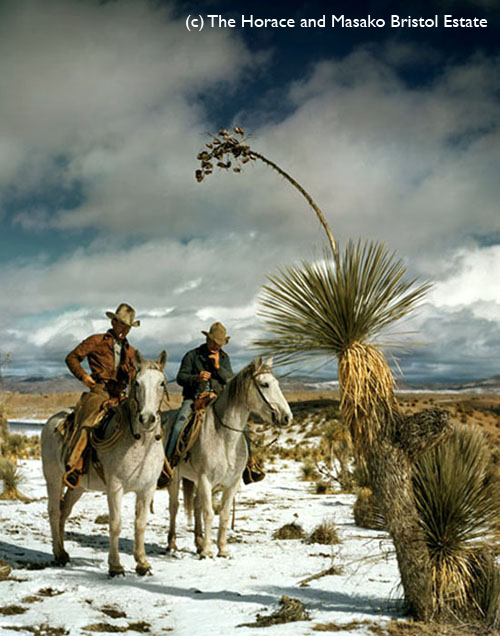
Cowboys New Mexico, 1939, 33" x 28"
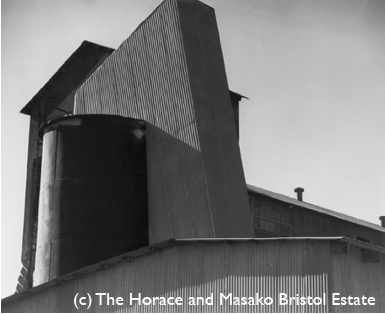
Corrugated Metal Factory, 1933, 24" x 27.5"
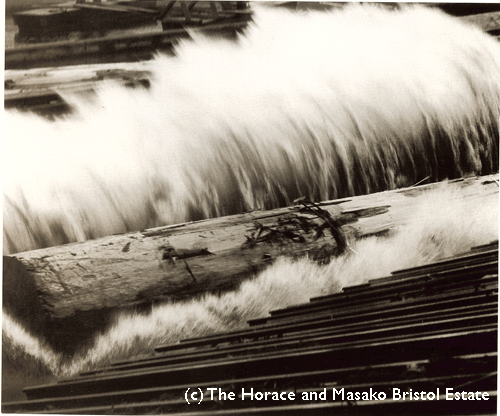
Log Falling in Water, 1936, 24" x 37.5"
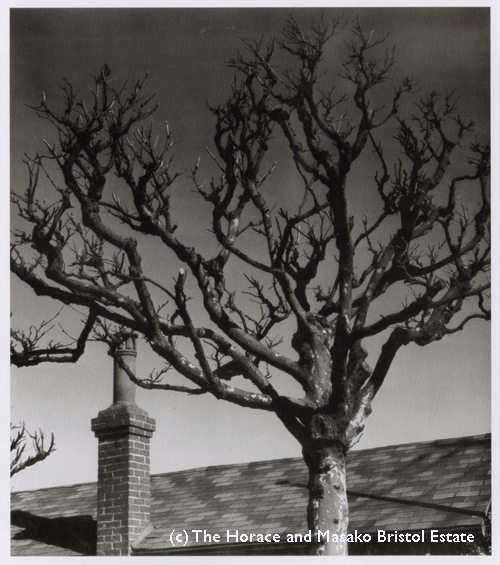
Tree and Rooftop "Nob hill", San Francisco, 1936, 33" x 28"
Grapes of Wrath
Signed Silver Gelatin Prints
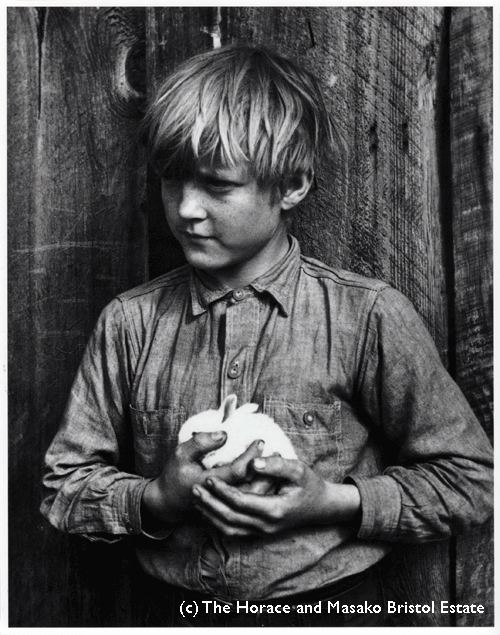
Winfield with Rabbit, 1938, 14" x 11"
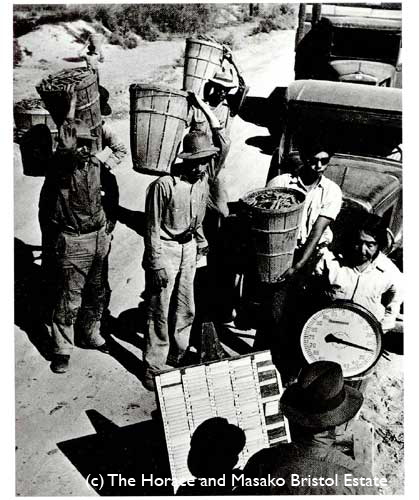
Pea Pickers, 1938, 14" x 11"

Small image of Plowing fields from Grapes of Wrath, 10" x 8"

Portrait of Migrant Mother, "Rose of Sharon", 1938, 14" x 11"

Rose of Sharon, from "The Grapes of Wrath Series," 1938, 14" x 11"
Please CLICK HERE to read the February 19, 1940 LIFE magazine article on Horace Bristol
WWII
When the United States entered World War II, Edward Steichen, who had commanded the aerial photographic operations of the American expeditionary force in France during World War I, applied to the naval reserve at the age of 63 with the intention of again directing aerial photography. He approached camera clubs and professional organizations to assemble a team of photographers. Bristol applied and was invited to join Steichen's elite team of six photographers. In addition to Bristol, they included Charles Fenno Jacobs, Victor Jorgensen, Charles Kerlee, Dwight Long (who opperated the motion picture unit), and Wayne Miller. Bristol was the only photographer who flew combat missions.
Signed Silver Gelatin Prints

Torpedo Planes in Formation, 1942, 14" x 11"
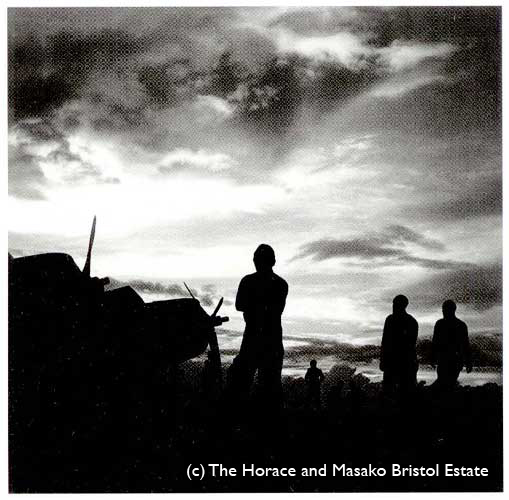
Sunset on Deck of Carrier, 1942, 14" x 11"
Estate Prints

PBY Blister Gunner, Rescue Rabaul, 1944, 32" x 32", edition 6 of 10

Planes on Carrier Deck, 1944, 14" x 11"
This is Bristol's most famous photograph. The reason the gunner is naked is because he is in an amphibeous plane that is forced to land when the plane next to his is shot down. He takes off his clothes and jumps into the water to save two airmen from the down plane. He pulls them to safety in his plane, where there are photographs of the two airmen having a cigarette after the rescue. Meanwhile the Japaneese continue firing on the gunner's plane and he must immediately re -man the gun, dripping wet. My favorite part of this photograph is the chart at the bottom right that says "This is the Enemy". If you only know who the enemy is by consluting a chart it seems a large statement about peace.
Japan & Asia
Signed Silver Gelatin Prints
After WWII Bristol made his permanent home in Japan. In 1946, he opened his own photo agency, East/West and became the premier photographer of post-war Asia covering all aspects of Japanese life, the Korean War, and Chiang Kai-shek's China. In 1956 Bristol returned home from Korea to find his wife who had comitted suicide. His wife who didn't speak any Japanese had been left in Tokyo for long periods while Bristol was on assignment. Bristol, beyond distraught, lit a giant bonfire and burned all the photographs he had in his posession in response and didn't take another photograph or tell anyone he was a photographer for the next 30 years.
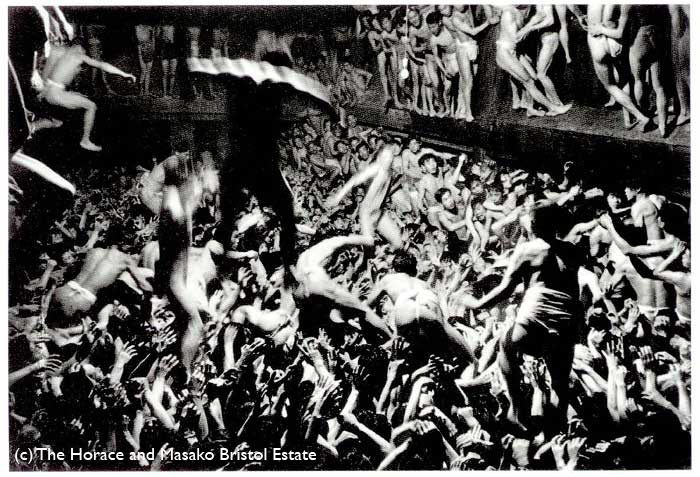
Shinto Shrine Melee, Signed 11" X 14", silver gelatian print, signed
Named by National Geographic as one of the 100 greatest photographs of all time, this photograph of a Shinto religious ritual only looks like Dante's Ningth Circle of Hell, it is really a festive celebration of fertility where Shinto Priests, just out of camera range, throw blessings into a giant mosh pit of naked farmers.
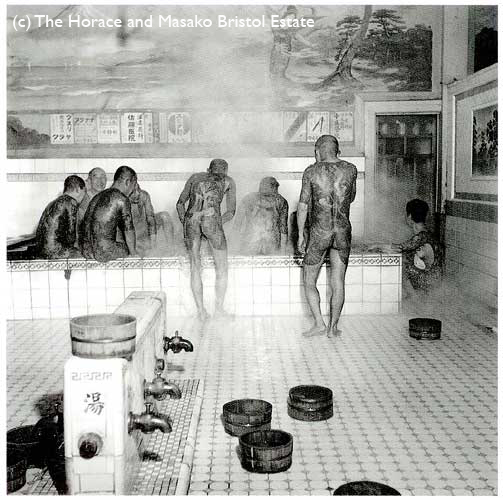
Yakuza Bath House, 1946, 14" x 11"
This is an extrememly rare picture of the Acuza in their ritual bath, notice there is one Woman present in the doorway.
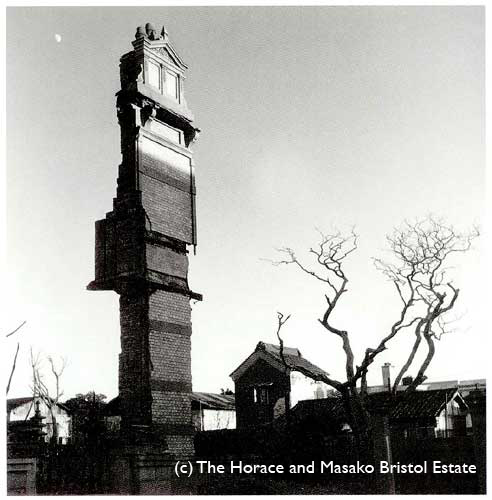
Chimney of Bombed-Out Building Tokyo, 1946, 14" x 11"

Tokyo Firemen, New Year's Demonstration, 1947, 11" x 11"

Tourists at Wedded Rocks, 1946, 14" x 11"
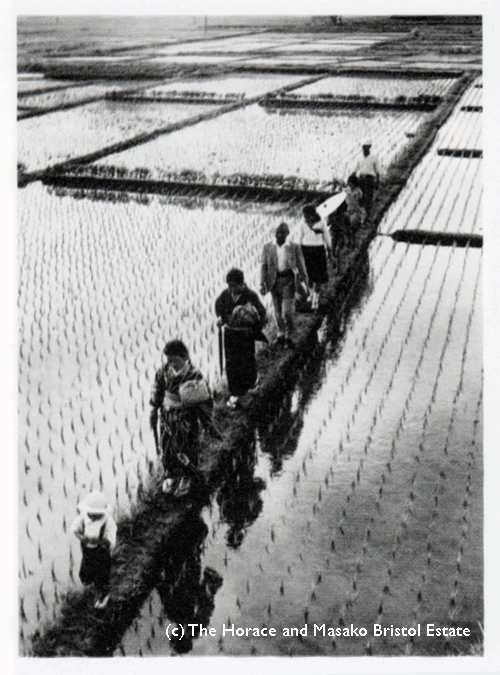
Rice Field Japan, 1947, 14" x 11"
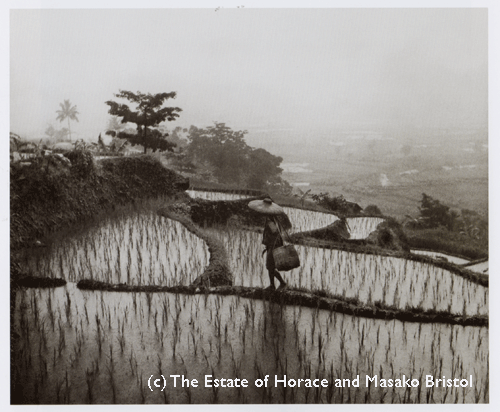
Rice Field Bali, 1947, 11" x 14"
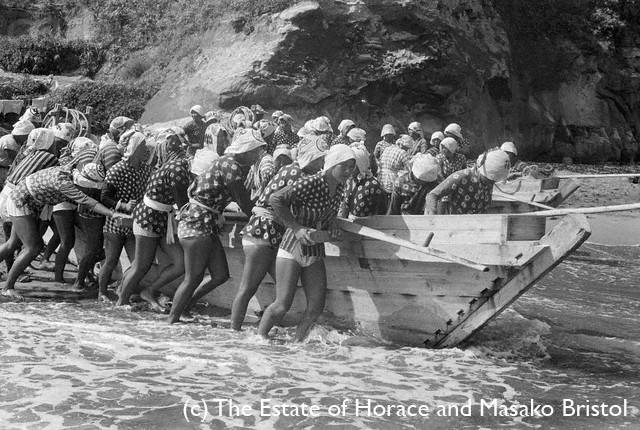
Diving Girls, 1947, 11" x 14"
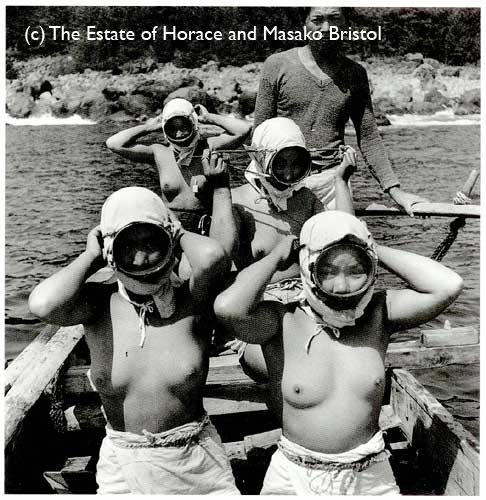
Diving Girls with Boat, 1947, 14" x 11"
Estate Prints

Shinto Shrine Melee, 1944, 47" x 33", giclee print
Named by National Geographic as one of the 100 greatest photographs of all time, this photograph of a Shinto religious ritual only looks like Dante's Ningth Circle of Hell, it is really a festive celebration of fertility where Shinto Priests, just out of camera range, throw blessings into a giant mosh pit of naked farmers.
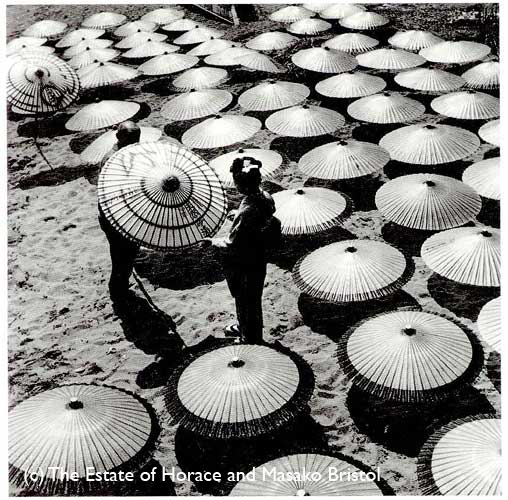
Geisha Choosing a Parasol, 1946, 24" x 30"

Mt. Fuji, 1946, 24" x 30"

Rice Field, Bali, 1947, 24" x 30"

Car and Tent, 1938, 11" x 14"